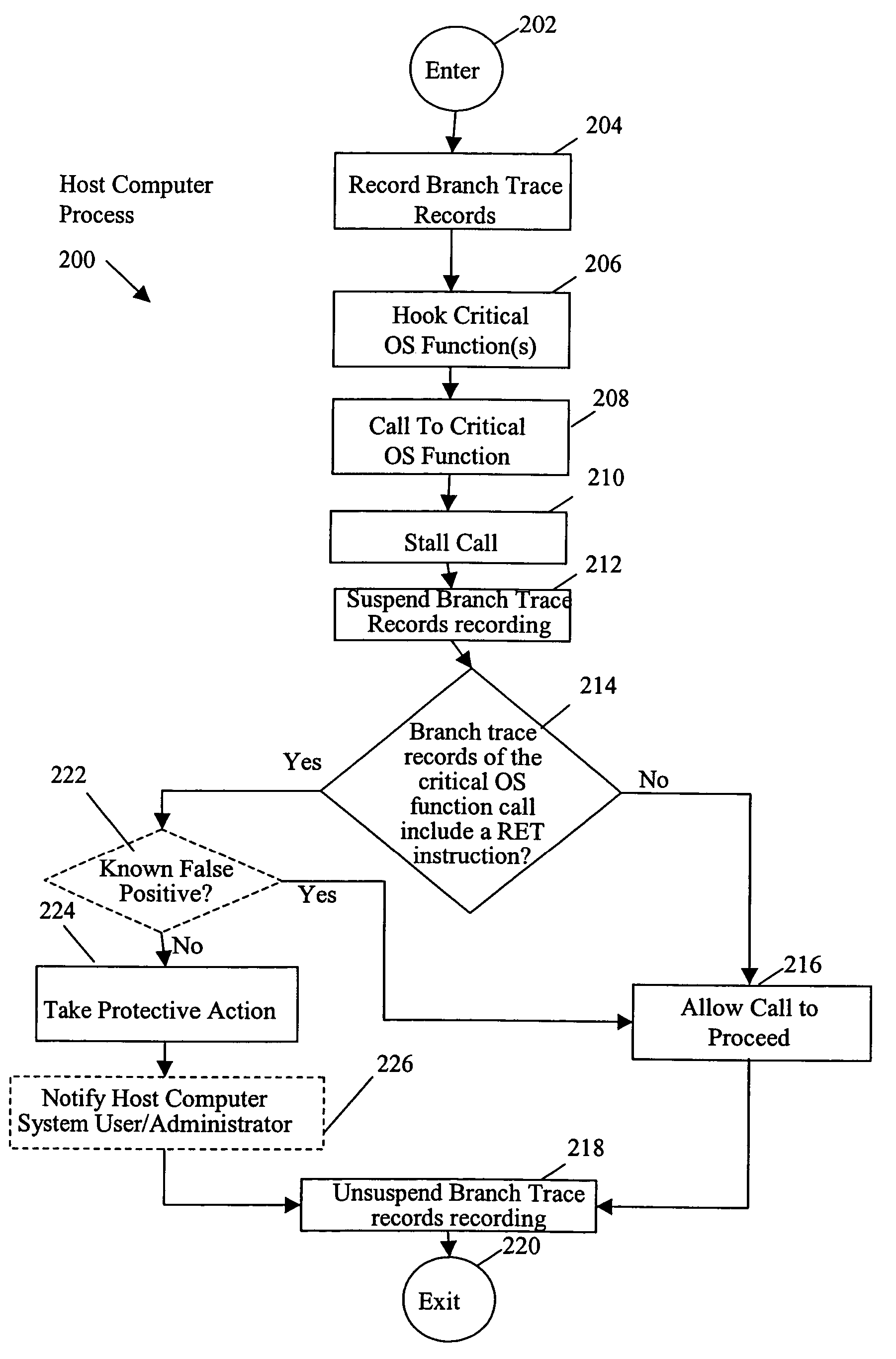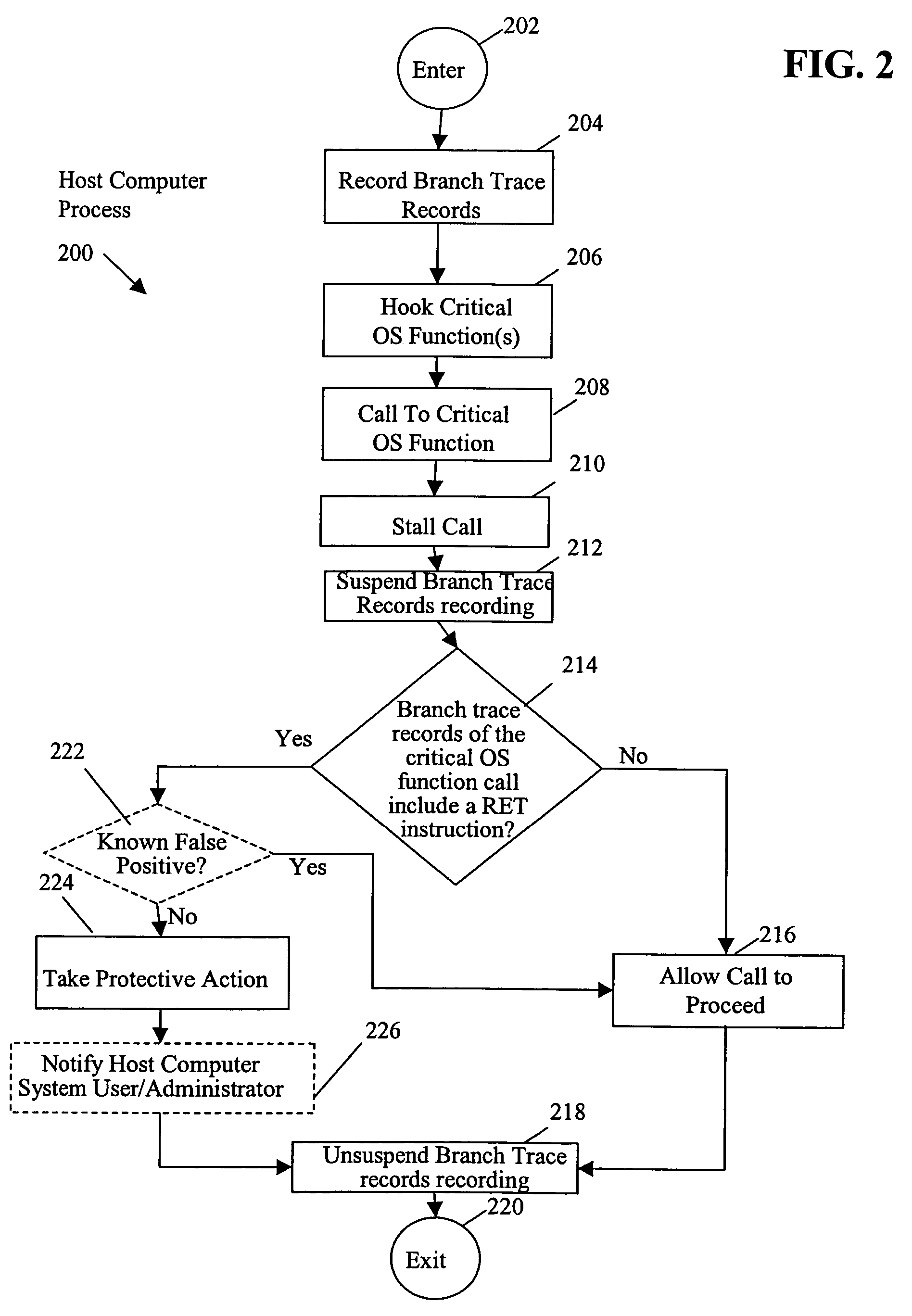Return-to-LIBC attack detection using branch trace records system and method
a branch trace record and attack detection technology, applied in the field of computer system protection, can solve problems such as stack-based buffer overflow, possible corruption of valid data, and possible change of execution flow and instructions
- Summary
- Abstract
- Description
- Claims
- Application Information
AI Technical Summary
Benefits of technology
Problems solved by technology
Method used
Image
Examples
Embodiment Construction
[0019]In accordance with one embodiment, referring to FIG. 2, a method includes stalling a call to a critical operating system (OS) function (OPERATION 210) and determining whether branch trace records of the call include a return instruction (CHECK OPERATION 214). Upon a determination that the branch trace records of the call do include a return instruction, the method further includes taking protective action to protect a computer system (OPERATION 224).
[0020]More particularly, FIG. 1 is a diagram of a client-server system 100 that includes a Return-to-LIBC attack detection application 106 executing on a host computer system 102, e.g., a first computer system, in accordance with one embodiment of the present invention.
[0021]Host computer system 102, sometimes called a client or user device, typically includes a central processing unit (CPU) 108, hereinafter processor 108, an input output (I / O) interface 110, and a memory 114. In one embodiment, memory 114 includes a page based vir...
PUM
 Login to View More
Login to View More Abstract
Description
Claims
Application Information
 Login to View More
Login to View More - R&D
- Intellectual Property
- Life Sciences
- Materials
- Tech Scout
- Unparalleled Data Quality
- Higher Quality Content
- 60% Fewer Hallucinations
Browse by: Latest US Patents, China's latest patents, Technical Efficacy Thesaurus, Application Domain, Technology Topic, Popular Technical Reports.
© 2025 PatSnap. All rights reserved.Legal|Privacy policy|Modern Slavery Act Transparency Statement|Sitemap|About US| Contact US: help@patsnap.com



